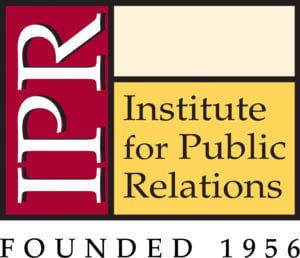
[Editor's Note: “Failure is the mother of success.” Professionals in all business sectors, including PR, know this truth. It’s a concept with a strong historical foundation. Thomas Edison tried thousands of ways to invent the light  bulb before he discovered his life-altering solution. Babe Ruth hit 714 home runs during his career, but at retirement he also held the mark for most strikeouts. Colonel Sanders had his now-famous fried chicken recipe rejected more than 1,000 times before it was accepted. Struggle can be a great educator. And innovating and failing fast have become top business strategies.
bulb before he discovered his life-altering solution. Babe Ruth hit 714 home runs during his career, but at retirement he also held the mark for most strikeouts. Colonel Sanders had his now-famous fried chicken recipe rejected more than 1,000 times before it was accepted. Struggle can be a great educator. And innovating and failing fast have become top business strategies.
In this series from PRNEWS and the Institute for Public Relations, PR industry leaders will share lessons they learned from failure.]
I hate to admit it has been more than two decades since I set out from the University of Kansas, journalism degree in hand, with all the confidence in the world. I was ready to conquer the media industry. In my mind I knew everything about how to build a career; in reality, I knew virtually nothing.
Through a combination of sheer will, lucky breaks, hard work and not knowing any better, I navigated my way through the industry. I had gigs in TV journalism, the nonprofit sector, on Capitol Hill, and a political appointment at the Department of Homeland Security. Eventually I landed in my current job, running communications and brand strategy for the nation’s largest industrial trade association, the National Association of Manufacturers (NAM).
With the PR landscape shifting dramatically, I am asked often how to succeed in this environment. There are three key takeaways I encourage professionals to consider.

24/7 News
First, the news cycle is a thing of the past. It has been replaced by an endless firestorm of information, storylines and commentary coming from the media through a variety of platforms and channels. The stories and issues you’re dealing with at 9 a.m. are probably not the ones you are thinking about at 6 p.m. In fact, those 9 a.m. issues may have been long forgotten by the evening.
The effect is that long-term planning is much harder. It also means professionals have to pick their battles. When a tweet pops up or a breaking news alert appears, it can be tempting to join the conversation immediately. But sometimes it can be smartest not to engage on the issue at all.
If you have a narrative you want to drive proactively, though, you have to figure out how to break through all this noise. Even more important, you must know whom you are trying to reach; a one-size-fits-all audience is no longer reachable.
Everyone's a Publisher
Second, people have become publishers. There is no shortage of online platforms to publish your content, never mind the obvious ones: Facebook and Twitter.
That can seem like a challenge, actually it is helpful because you can tell a story on your terms. At the NAM, we recognized the need to break through the noise with a direct approach. We began telling our story on our channels—and it worked. Our reporting has been cited by other news outlets, senators and the White House.
Now we have revamped the entire website to tell the stories of manufacturers in a way that advances our priorities. We are the news source about manufacturing and for manufacturing.
Finally, the third trend we are witnessing is that generalists are in demand. Certainly, communications teams need people who still have solid experience in specific areas, such as digital strategy, marketing and speechwriting. However, if professionals are able to break out of their silos, their team will be stronger. People have to be nimble and able to wear many hats.
Organizations are being asked to do more as new demands evolve. In some cases, they are being asked to do more with less. Having people that can adapt quickly to new circumstances is an invaluable asset, as is having a team that understands the big picture landscape—political trends, business trends, media trends—even if their job descriptions do not explicitly require that.
Agility
That in turn is an important lesson for aspiring PR pros: think about how you demonstrate that agility. And for more experienced professionals who are building your own teams, do not assume that only a certain set of experiences are applicable for a given position. While you may have one definition for a certain PR job, the changing landscape may redefine it for you in a few short months or years.
I learned through experience that there is no rulebook or clearly defined career path in public relations. The rules change constantly, and you have to blaze your own trail. But as long as you are familiar with the landscape around you, success is always possible.
Erin Streeter is a member of the board of trustees of the Institute for Public Relations. She is SVP of communications and brand strategy at the National Association of Manufacturers. Streeter was named one of PRNEWS’ Top Women in PR (2015, 2018).
